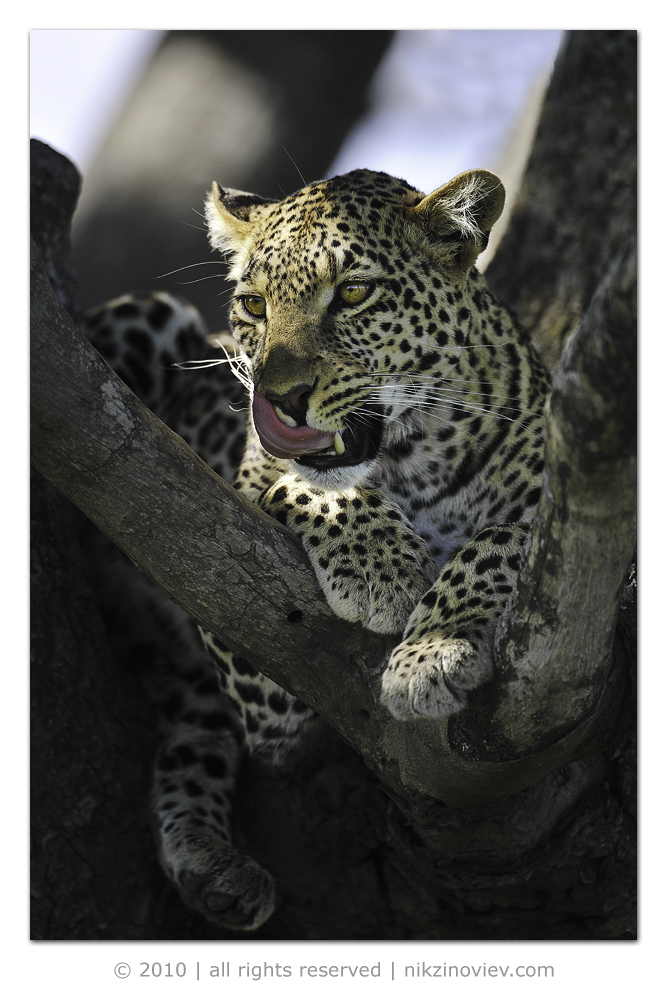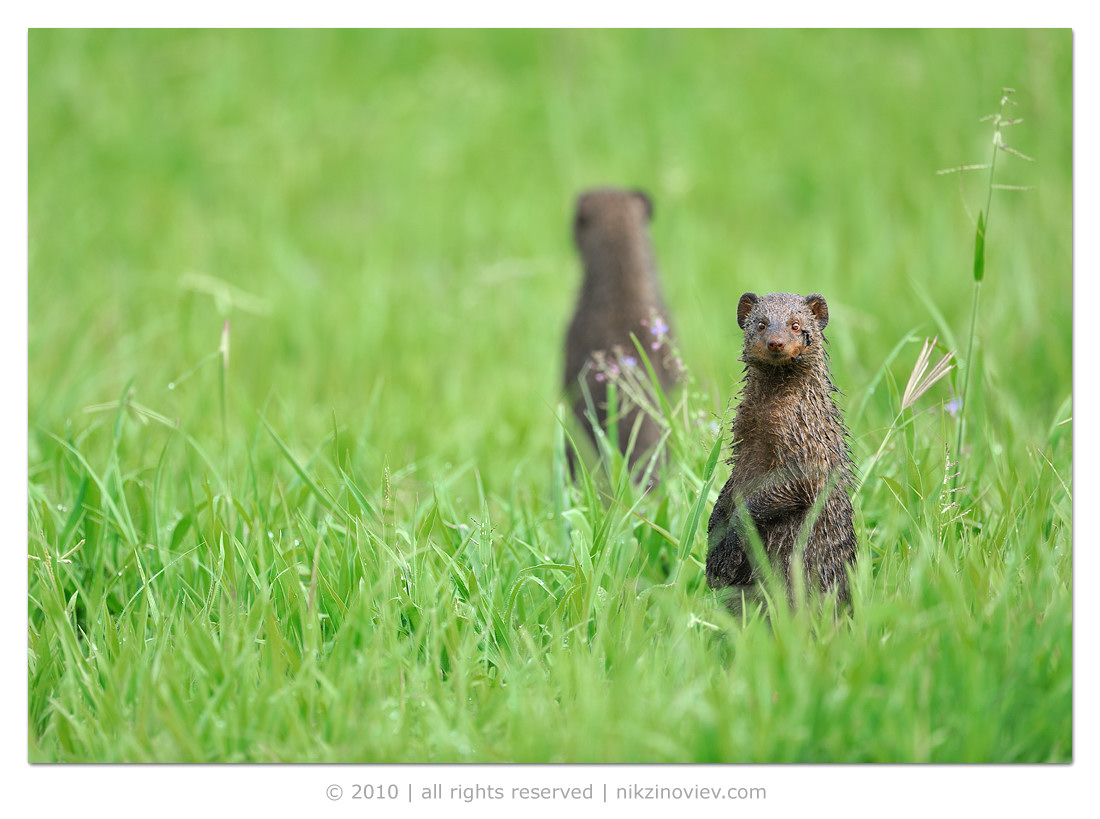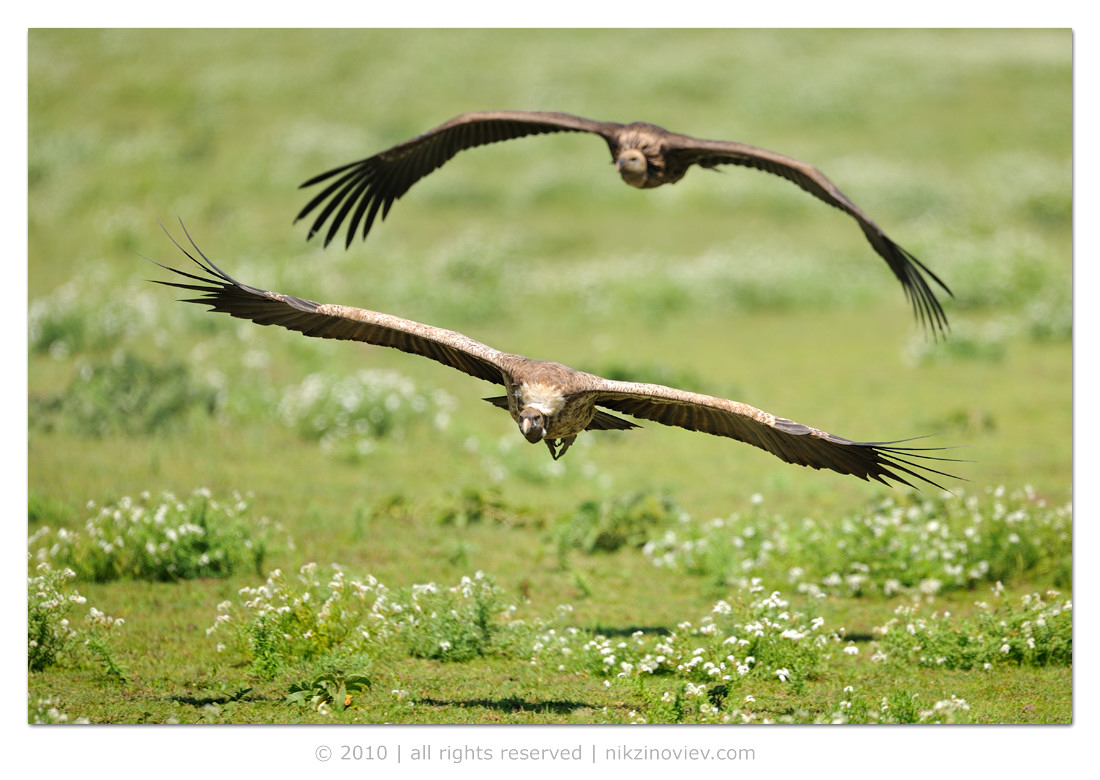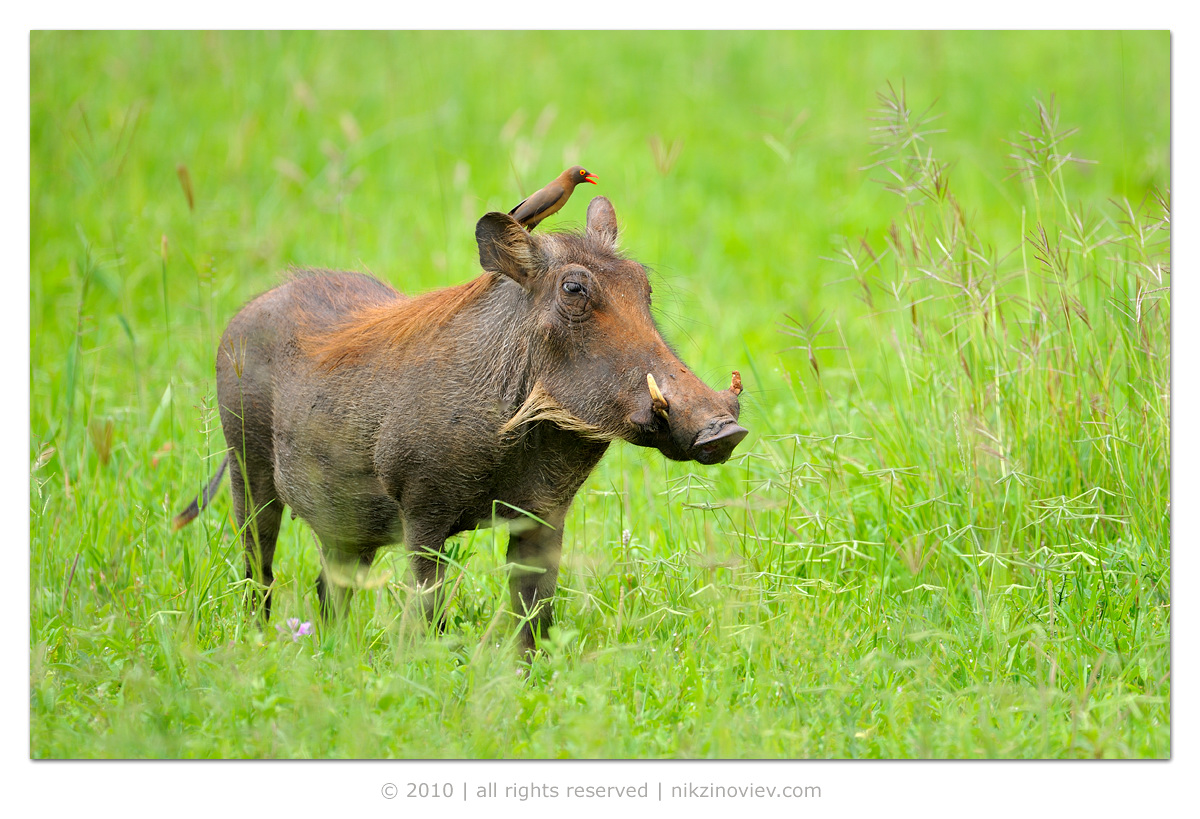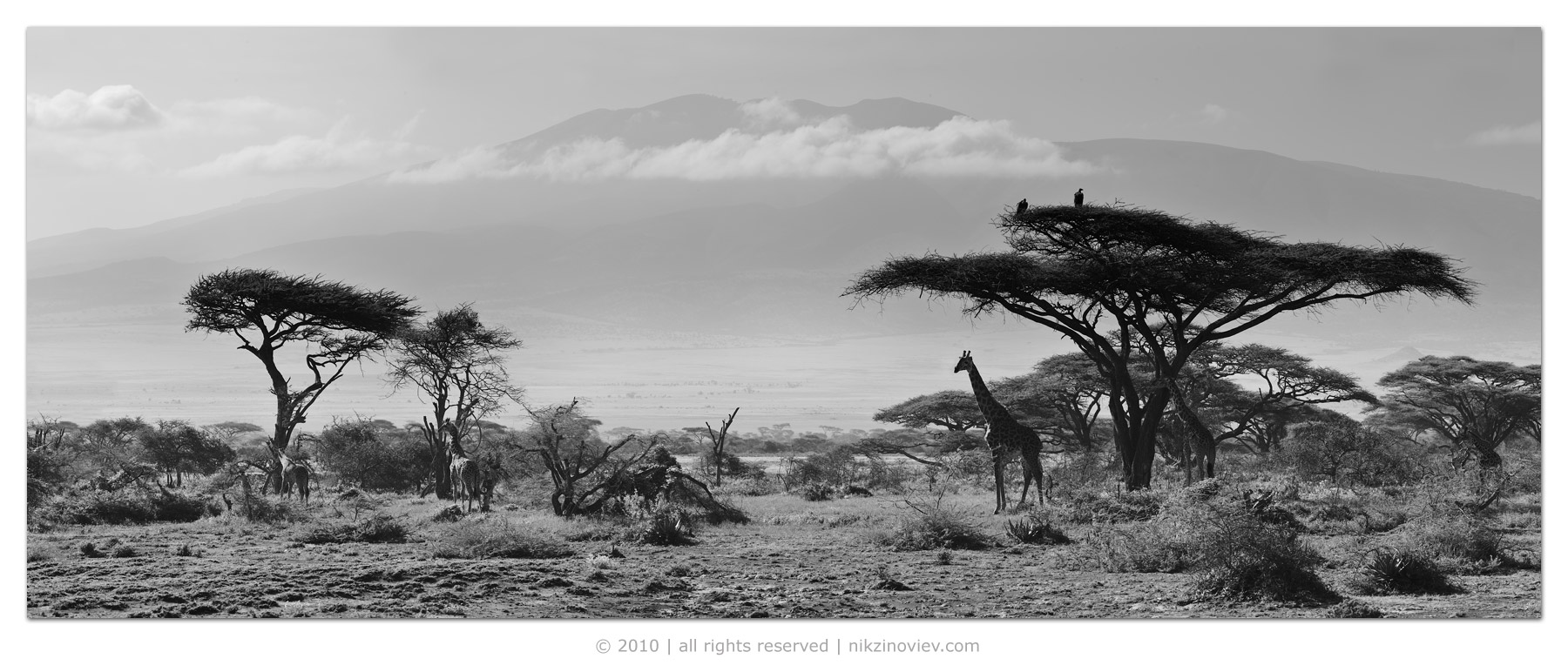The GetDPI Photography Forum
Great to see you here. Join our insightful photographic forum today and start tapping into a huge wealth of photographic knowledge. Completing our simple registration process will allow you to gain access to exclusive content, add your own topics and posts, share your work and connect with other members through your own private inbox! And don’t forget to say hi!
MF for wildlife photography?
- Thread starter Nik
- Start date
Nik
Member
Dear all!
Thank you SO MUCH for all the views and advise you have given me! There are very few places on the web, where I saw this sort of attitude and atmosphere. As far as the underlying subject goes - I will take the majority's advice and stick with my D3X for now. I will wait for new developments in MF arena as far as 645D goes as well as with DSLRs (may be higher mpx bodies).
Cheers, Nik
P.S.
These are some pictures I took this January in Tanzania. All the best to you guys!
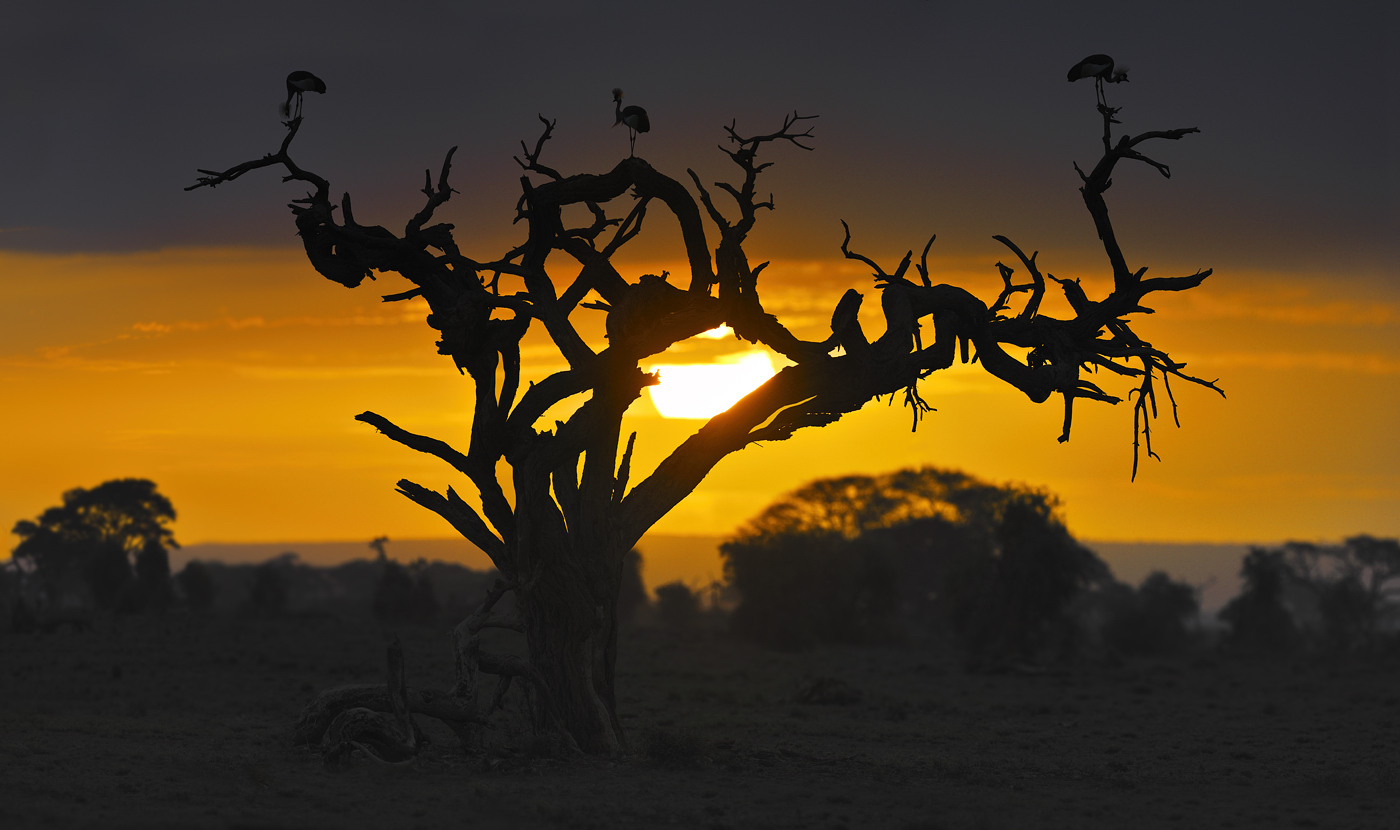
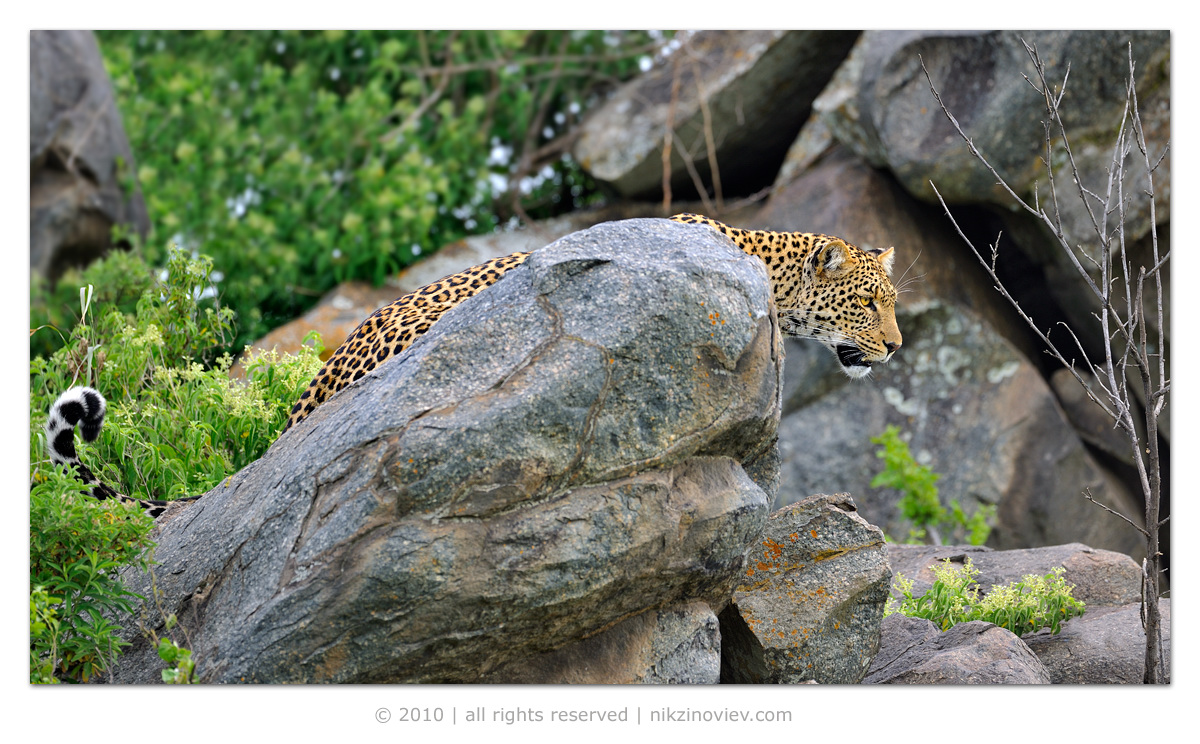
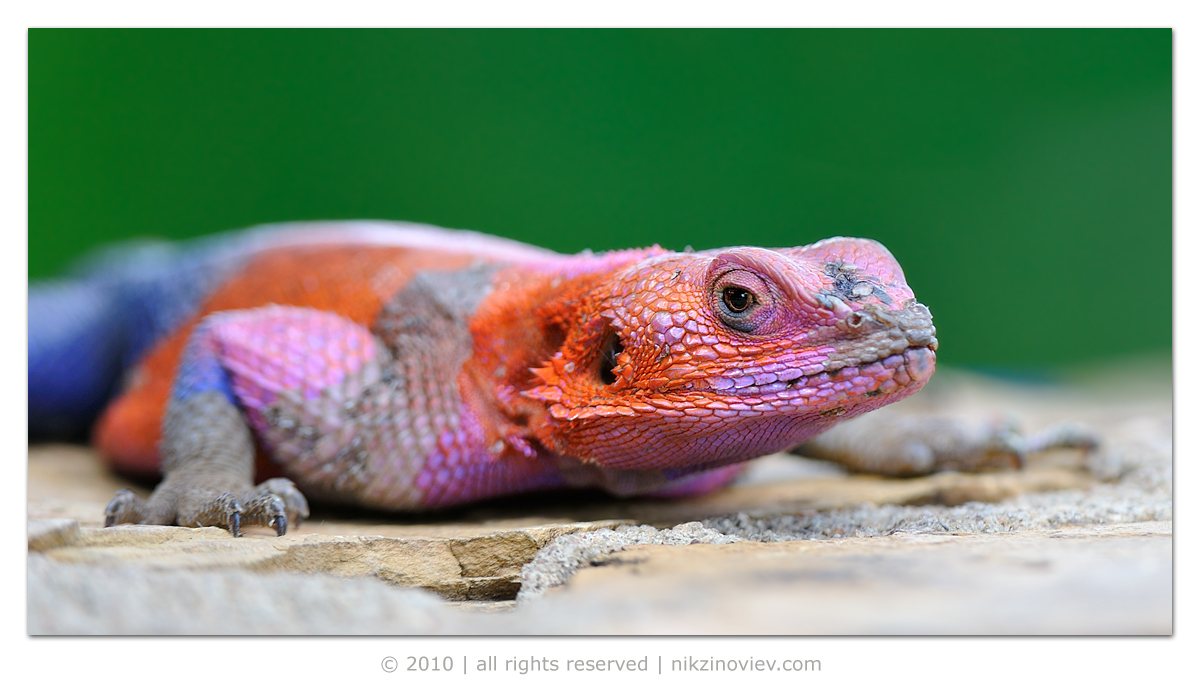
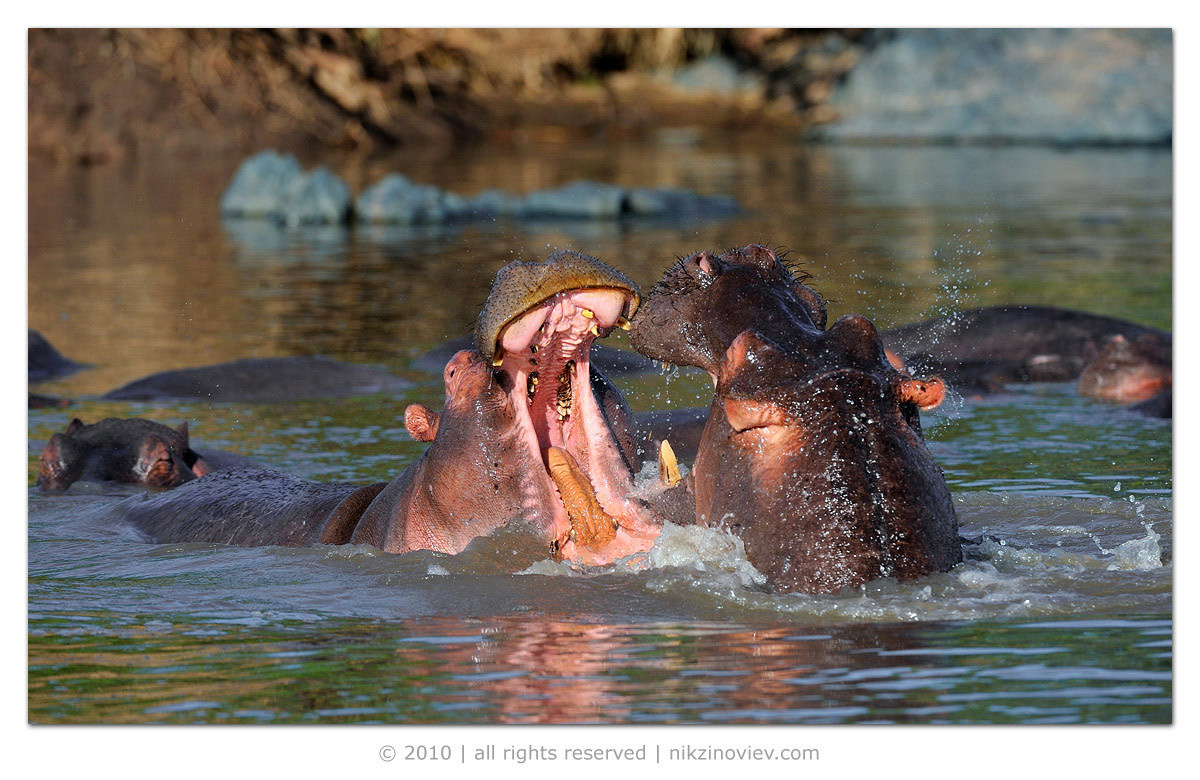
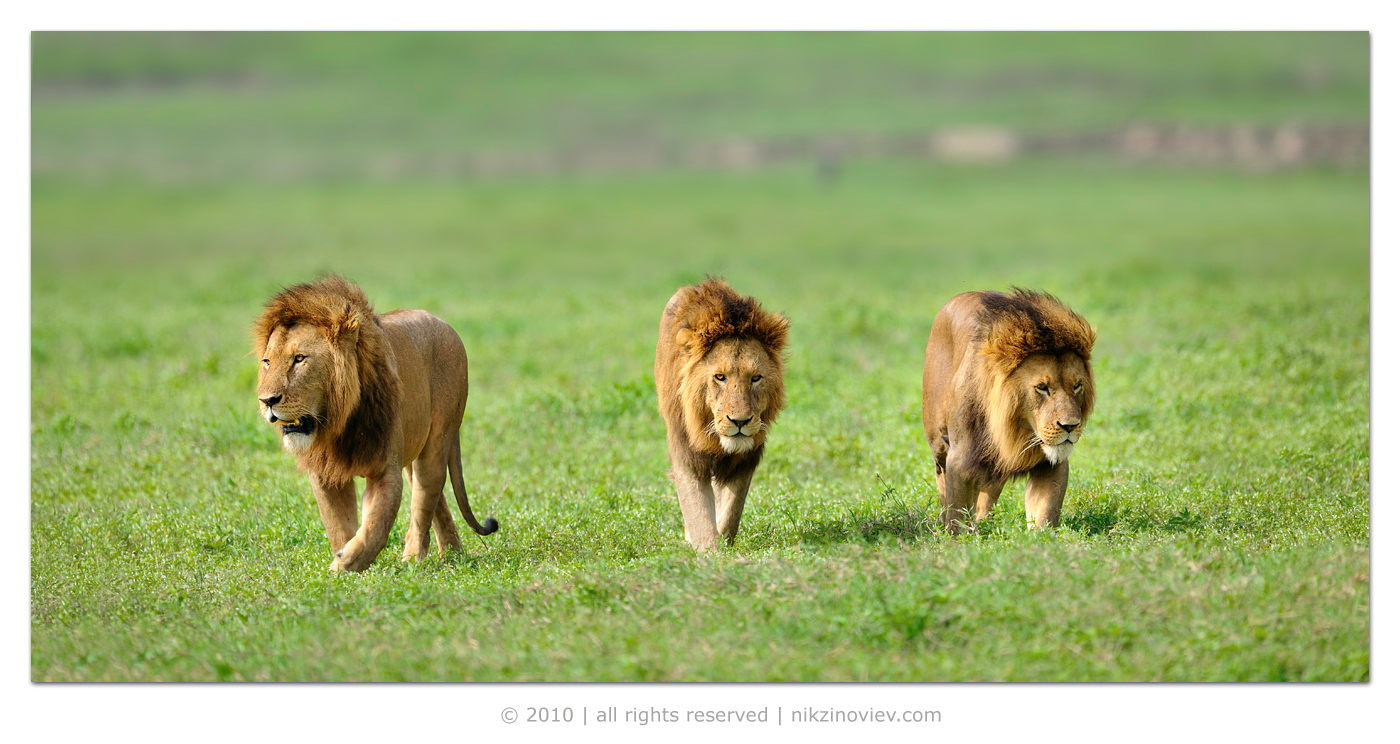
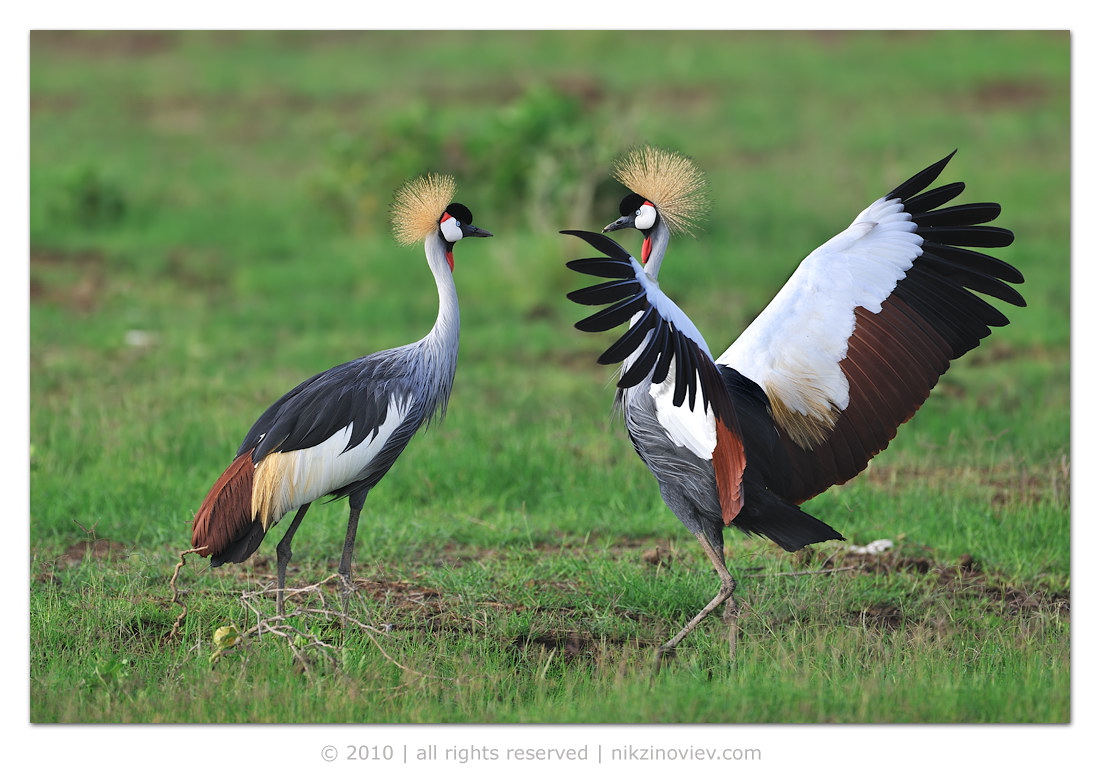
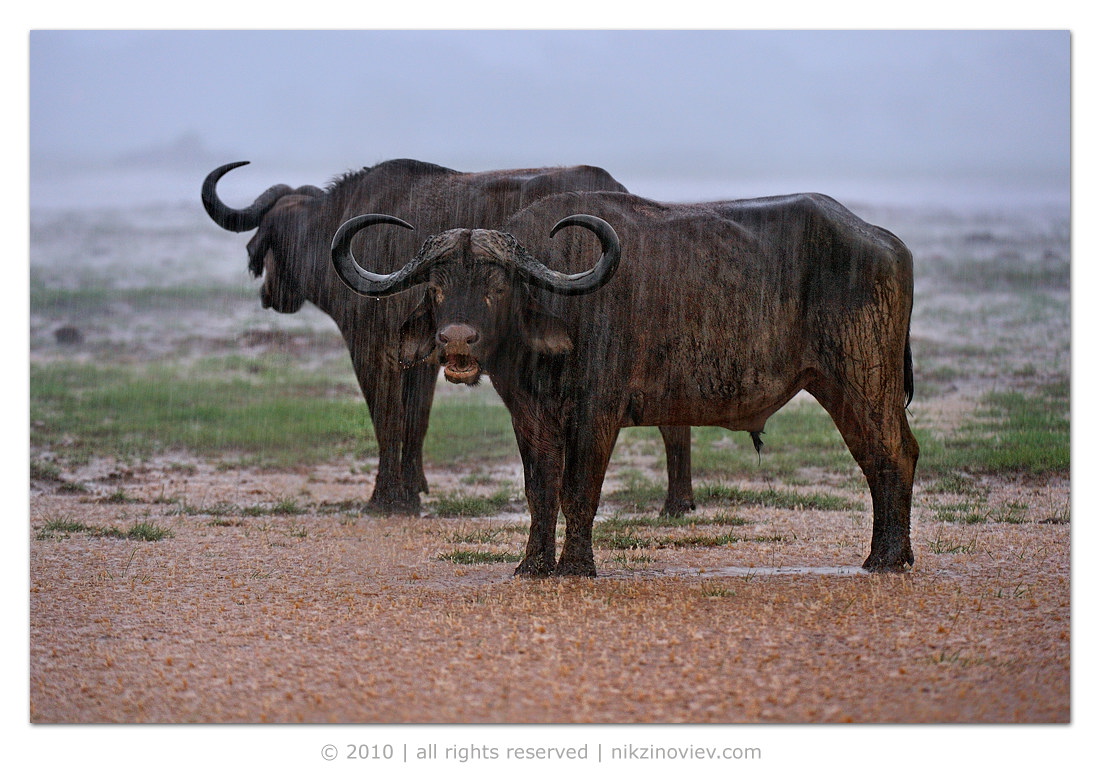
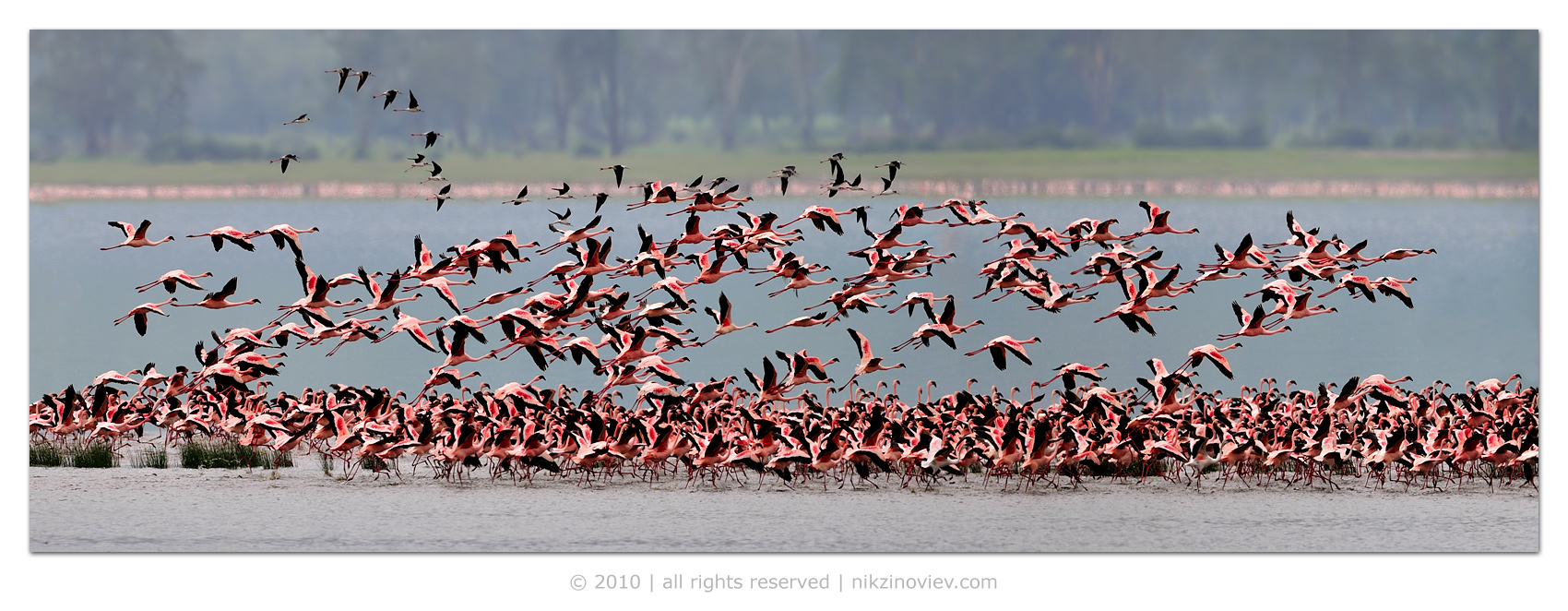
Thank you SO MUCH for all the views and advise you have given me! There are very few places on the web, where I saw this sort of attitude and atmosphere. As far as the underlying subject goes - I will take the majority's advice and stick with my D3X for now. I will wait for new developments in MF arena as far as 645D goes as well as with DSLRs (may be higher mpx bodies).
Cheers, Nik
P.S.
These are some pictures I took this January in Tanzania. All the best to you guys!








dougpeterson
Workshop Member
First of all - amazing images. Amazing.
Second: I think the same three things apply here as in most uses of medium format vs dSLRs for applications where the subject isn't a static landscape.
1) Your "hit" rate will be lower with medium format than with a dSLR
2) The "hit" images will print larger, have better flexibility in post, require less sharpening, and otherwise exhibit MF image-quality
3) Your "hit" rate will increase with usage (as with any gear) - though I would not expect your hit rate to be as high as a dSLR for wildlife ever
But it also depends a lot on the type of wildlife you are shooting. I see three major types of shots in the above examples:
1) scenic landscapes
2) tight tight static animals
3) tight in-action animals
For #1 I think Medium Format is a no brainer - it will do wonders for the color you capture by-default and for the amount of post processing you can do while maintaining a natural look, smooth gradations, and clean detail.
For #2 I think Medium format will be a challenge but could be rewarding. The question is if you go on a trip and come back with, say, 50% as many "keepers" but they are more detailed shots with better post-flexibility and overall higher image quality would you be happy or disappointed by the 50% you didn't come back with?
As for #3... even as a huge fan of medium format and a biased employee of a company that does most of it's business selling medium format solutions I would not say that you should attempt to use medium format for the #3 except as a "out of curiosity" exercise. I think using an 8x10 view camera for portraits is a big equipment mismatch but it can produce some very compelling images (along with a huge amount of frustration, missed/botched shots, and a much lower level of image production per hour). This is the domain of a dSLR with a ultra-long, fast-aperture, fast-AF, IS and a high frame rate. Going at it with a medium format system may occasionally produce a spectacular image, but at the cost of a lot of frustration and missed shots. The two birds (vultures) flying for instance in your last set of images you posted would have been a 1/50 chance of hitting on medium format even with a DF body (of course it was probably 1/10 chance with a D3X so it's not THAT much worse ).
).
As a related example I think an infrared digital back on a Horseman SWD (rangefinder tech camera) is a big mismatch for sports but I love the shot I produced using that combo below. Granted during the entire game I only produced 6 or 7 keepers, but I also produced shots that I don't think anyone else at the game did. So if I was covering the event for a newspaper I would have been fired (unless there was another shooter from the same newspaper doing "normal" shots).
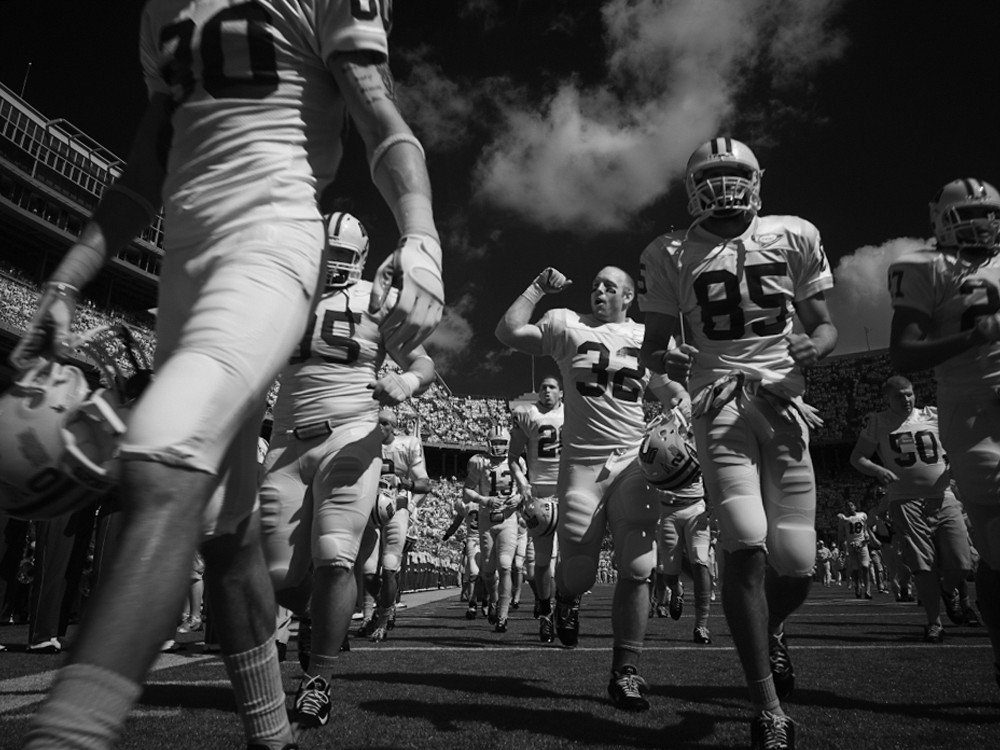
- infrared phase one digital back on a Horseman SWD with Rodenstock 35mm lens and Hoya 72R infrared lens filter
I'd rent an appropriate system during your next trip. Get it a few days ahead of time to get some of the learning curve out of the way, and carry it as a second system. When you see something conducive, try it out. I would definitely not buy a system until you had used it in the field. Most dealers (including us) would let you rent it for a discounted multi-day rate and then apply the rental towards the purchase if you pull the trigger.
Doug Peterson (e-mail Me)
__________________
Head of Technical Services, Capture Integration
Phase One, Leaf, Cambo, Canon, Apple, Profoto, Eizo & More
National: 877.217.9870 *| *Cell: 740.707.2183
Newsletter: Read Latest or Sign Up
RSS Feed: Subscribe
Buy Capture One at 10% off
Personal Work
Second: I think the same three things apply here as in most uses of medium format vs dSLRs for applications where the subject isn't a static landscape.
1) Your "hit" rate will be lower with medium format than with a dSLR
2) The "hit" images will print larger, have better flexibility in post, require less sharpening, and otherwise exhibit MF image-quality
3) Your "hit" rate will increase with usage (as with any gear) - though I would not expect your hit rate to be as high as a dSLR for wildlife ever
But it also depends a lot on the type of wildlife you are shooting. I see three major types of shots in the above examples:
1) scenic landscapes
2) tight tight static animals
3) tight in-action animals
For #1 I think Medium Format is a no brainer - it will do wonders for the color you capture by-default and for the amount of post processing you can do while maintaining a natural look, smooth gradations, and clean detail.
For #2 I think Medium format will be a challenge but could be rewarding. The question is if you go on a trip and come back with, say, 50% as many "keepers" but they are more detailed shots with better post-flexibility and overall higher image quality would you be happy or disappointed by the 50% you didn't come back with?
As for #3... even as a huge fan of medium format and a biased employee of a company that does most of it's business selling medium format solutions I would not say that you should attempt to use medium format for the #3 except as a "out of curiosity" exercise. I think using an 8x10 view camera for portraits is a big equipment mismatch but it can produce some very compelling images (along with a huge amount of frustration, missed/botched shots, and a much lower level of image production per hour). This is the domain of a dSLR with a ultra-long, fast-aperture, fast-AF, IS and a high frame rate. Going at it with a medium format system may occasionally produce a spectacular image, but at the cost of a lot of frustration and missed shots. The two birds (vultures) flying for instance in your last set of images you posted would have been a 1/50 chance of hitting on medium format even with a DF body (of course it was probably 1/10 chance with a D3X so it's not THAT much worse
As a related example I think an infrared digital back on a Horseman SWD (rangefinder tech camera) is a big mismatch for sports but I love the shot I produced using that combo below. Granted during the entire game I only produced 6 or 7 keepers, but I also produced shots that I don't think anyone else at the game did. So if I was covering the event for a newspaper I would have been fired (unless there was another shooter from the same newspaper doing "normal" shots).

- infrared phase one digital back on a Horseman SWD with Rodenstock 35mm lens and Hoya 72R infrared lens filter
I'd rent an appropriate system during your next trip. Get it a few days ahead of time to get some of the learning curve out of the way, and carry it as a second system. When you see something conducive, try it out. I would definitely not buy a system until you had used it in the field. Most dealers (including us) would let you rent it for a discounted multi-day rate and then apply the rental towards the purchase if you pull the trigger.
Doug Peterson (e-mail Me)
__________________
Head of Technical Services, Capture Integration
Phase One, Leaf, Cambo, Canon, Apple, Profoto, Eizo & More
National: 877.217.9870 *| *Cell: 740.707.2183
Newsletter: Read Latest or Sign Up
RSS Feed: Subscribe
Buy Capture One at 10% off
Personal Work
Last edited:
Steve Hendrix
Well-known member
There is no doubt in my mind that a FF DLSR with nice long glass is the better choice for photographing wildlife. It was not that long ago that I was talking with my Giant about his hopes of using medium format digital to capture wildlife. Guy, I'm sure that you've probably had the same conversation with your Giant. :ROTFL:
Probably everyone here that has bought into medium format digital, at arguably an absurd price of entry (Dante warned us), has done so in the quest to obtain the best possible image quality. And so it is with this type of thinking in mind that there is a little voice in me that says, wow, what if I could capture a once-in-a-lifetime image on medium format digital as opposed to my DSLR?
Right now, I can only dream of visiting the places that Nik has been to in capturing some really amazing images, let alone photograph there. I know that if I could, I'd have my 1DsMark IIII and big white barrelled lenses at the ready. But the new Phase 645DF causes more pause for thought. It offers really great auto-focus, and even in dimly lit interiors. (Better than my 5D II, and just behind the 1Ds Mark III). And the P65+ is pretty flexible ISO speed wise. Limited focal length though for AF lenses, and middle-aged eyes demand AF.
A full-frame DSLR is the better choice. But that little voice keeps asking, "What if...."
ken
What if indeed?
This guy produces amazing, intimate images without a telephoto lens. I love his work.
http://www.nickbrandt.com/portfolio.cfm?nK=7648&nS=0&i=85418
I think it can be done, but it takes more time, just as much great nature photography takes time to acclimate yourself to the subject. Without the benefit of distance, acclimation becomes a more prevalent part of the process. But as you can see from his results, not using distance and introducing intimacy can have a stunning effect.
Steve Hendrix
Guy Mancuso
Administrator, Instructor
I knew a guy who shot film for National Geo. His speciality was grizzly bears. Now this guy had a screw lose no doubt but he would get the odor of a grizzly ( you know what I am talking about) and rub it all over him, so essentially he was a grizzly bear. He used to shoot within 10-20 yards of grizzly's. Not highly recommended but you want to get something done you will find a way.
Nik
Member
Steve, the guy doesn't have any pictures of fast action, static birds, not to speak of birds in flight and any shy animals. Why? Why could not he establish intimacy with them? :grin:What if indeed?
This guy produces amazing, intimate images without a telephoto lens. I love his work.
http://www.nickbrandt.com/portfolio.cfm?nK=7648&nS=0&i=85418
I think it can be done, but it takes more time, just as much great nature photography takes time to acclimate yourself to the subject. Without the benefit of distance, acclimation becomes a more prevalent part of the process. But as you can see from his results, not using distance and introducing intimacy can have a stunning effect.
Steve Hendrix
Nik
Member
Guy, I don't want to say anything bad about your example ... I personally know one photog here who hired locals in the Russian far east to feed wild bears, foxes, etc. for an extended period of time. Flew in, took absolutely awesome and mindblowing images that no one was able to take before at a minimum focusing distances using super wide glass ... made a name and had considerable commecial success selling these images. After several trips he became "world class" wildlife photog. Of course, he did not tell anyone he'd "prepared his models". All I am trying to say - shooting long glass is not only about convenience ... it is about not disturbing animals, not intervening in their environment. I do not believe in intimacy of humans and wild animals.I knew a guy who shot film for National Geo. His speciality was grizzly bears. Now this guy had a screw lose no doubt but he would get the odor of a grizzly ( you know what I am talking about) and rub it all over him, so essentially he was a grizzly bear. He used to shoot within 10-20 yards of grizzly's. Not highly recommended but you want to get something done you will find a way.
Guy Mancuso
Administrator, Instructor
I realize that but it is pretty amazing he was able to adapt to them on very close range. Not my cup of tea either but he did not feed them he actually lived among them which is even scarier.
Steve Hendrix
Well-known member
Steve, the guy doesn't have any pictures of fast action, static birds, not to speak of birds in flight and any shy animals. Why? Why could not he establish intimacy with them? :grin:
Well, sure - there are limitations to everything. I'm not saying not using telephoto lenses is easy or versatile, just pointing out that in some instances non-telephoto situations can be utilized with amazing results.
Steve Hendrix
Nik
Member
I am on the same page with you on this one. In fact I am struggling inside and changing my mind in respect to getting into MF on a daily and sometimes hourly basis :ROTFL: It drives me nuts! I open 56 mpx Leaf aptus ii file and start drooling over the details and DD. I will end up doing everything up to ~ 200 mm with MF and everything above that with DSLRWell, sure - there are limitations to everything. I'm not saying not using telephoto lenses is easy or versatile, just pointing out that in some instances non-telephoto situations can be utilized with amazing results.
Steve Hendrix
Steve Hendrix
Well-known member
I am on the same page with you on this one. In fact I am struggling inside and changing my mind in respect to getting into MF on a daily and sometimes hourly basis :ROTFL: It drives me nuts! I open 56 mpx Leaf aptus ii file and start drooling over the details and DD. I will end up doing everything up to ~ 200 mm with MF and everything above that with DSLRAt least that's the craving I have in my head right now
not sure about tomorrow

I like that thought - best of both world's.....and different world's at that.
Steve Hendrix
ptomsu
Workshop Member
I think that for real wildlife nothing can top a fast AF FF DSLR. There are only 2 brands in my opinion which can deliver in that field - Nikon and Canon.
Although the thought to use MF as supplement for some wider and more landscape plus animals work is interesting and makes lot of sense.
My dream combination would be D3X plus 200-400 and a fast 600 plus TC1.4 and TC2.0. And a Hasselblad with 28, 100 and 300mm lenses and the 1.7 Tele Converter, which gives you a 510 in MF - not too bad!
Although the thought to use MF as supplement for some wider and more landscape plus animals work is interesting and makes lot of sense.
My dream combination would be D3X plus 200-400 and a fast 600 plus TC1.4 and TC2.0. And a Hasselblad with 28, 100 and 300mm lenses and the 1.7 Tele Converter, which gives you a 510 in MF - not too bad!
Nik
Member
I shot with D3X plus 200-400 and 600 VR during my last trip to Tanzania in January. Despite some recent "disillusionment" about 200-400 medium and long range optical performance by several users on dpreview and after the review given to it by Thom Hogan (http://www.bythom.com/Nikkor-200-400mm-lensreview.htm), I still believe it is an ideal safari lens. Together with 600VR it is a killer combo.I think that for real wildlife nothing can top a fast AF FF DSLR. There are only 2 brands in my opinion which can deliver in that field - Nikon and Canon.
Although the thought to use MF as supplement for some wider and more landscape plus animals work is interesting and makes lot of sense.
My dream combination would be D3X plus 200-400 and a fast 600 plus TC1.4 and TC2.0. And a Hasselblad with 28, 100 and 300mm lenses and the 1.7 Tele Converter, which gives you a 510 in MF - not too bad!
Steve Hendrix
Well-known member
I think that for real wildlife nothing can top a fast AF FF DSLR. There are only 2 brands in my opinion which can deliver in that field - Nikon and Canon.
Although the thought to use MF as supplement for some wider and more landscape plus animals work is interesting and makes lot of sense.
My dream combination would be D3X plus 200-400 and a fast 600 plus TC1.4 and TC2.0. And a Hasselblad with 28, 100 and 300mm lenses and the 1.7 Tele Converter, which gives you a 510 in MF - not too bad!
I generally agree for traditional work.
But I loved the idea of what Brandt did, which was almost like wild animal classic hollywood portraiture (at least that's my idea of what he did).
And the idea of taking a traditional genre and putting a different approach to it I think is a great position to come from - especially in terms of uniqueness.
But traditionally, no question, Canon/Nikon will provide length and access to wildlife, faster handling and ISO for various conditions.
But the idea of being closer to something and getting a real look in there and capturing that with such a high quality device (or even just something different from 35mm) would be thrilling (and difficult). And unique.
Steve Hendrix
ptomsu
Workshop Member
Of course, this would be unique and thrilling and I must say I would really like to try it.I generally agree for traditional work.
But traditionally, no question, Canon/Nikon will provide length and access to wildlife, faster handling and ISO for various conditions.
But the idea of being closer to something and getting a real look in there and capturing that with such a high quality device (or even just something different from 35mm) would be thrilling (and difficult). And unique.
Steve Hendrix
Not doing photography for a profession actually allows to play a bit around and not necessarily come home with perfect results. But on the other hand exactly this freedom can result in extraordinary and outstanding new images and styles.
GMB
Active member
Nick Brandt had an exposition in a gallery in Brussels over the holiday season. While his photos look great on screen, you can only fully appreciate them if you see them live in large prints. They are very elegant and reveal an almost human character of the animals. In fact, my wife and I liked them so much that we bought a print of the square portrait of the lioness (the 9th photo in his gallery). The photo of the lion you see on the gallery was taken after he spent 18 days observing him. If is a very special type of wildlife photography, indeed somewhat comparable to Richard Avendon's portraits rather than wildlife, and certainly no action (although he also has a photo of two rhinos standing nose by nose where you can feel the tension.What if indeed?
This guy produces amazing, intimate images without a telephoto lens. I love his work.
http://www.nickbrandt.com/portfolio.cfm?nK=7648&nS=0&i=85418
I think it can be done, but it takes more time, just as much great nature photography takes time to acclimate yourself to the subject. Without the benefit of distance, acclimation becomes a more prevalent part of the process. But as you can see from his results, not using distance and introducing intimacy can have a stunning effect.
Steve Hendrix
I was on a family safari in Etosha national park where you get very close to wild animals. So I think one can do it with MF, and if I ever choose a MF system, the availability of somewhat longer lenses will be an important factor for me.
bensonga
Well-known member
The Pentax 67 lenses can be used on the Pentax 645N & 645NII with the Pentax 67->645 adapter and they retain full auto aperture functionality but you lose the multi-segment metering. According to the 645D specs released by Pentax the 645D lens mount is compatible with the older 645 "A" manual focus lenses and since that's basically what a P67 lens is when mounted using the P67->645 lens adapter.....I think they should work on the 645D. I hope so too!I believe that Pentax 600/4 mentioned is for the 6X7 camera and it is a beast (there is also a 800/4, 800/6.7). Do not know yet whether a Pentax 67 lens can be adapted to the new Pentax 645D camera. Hope so.
-Marc
Gary

